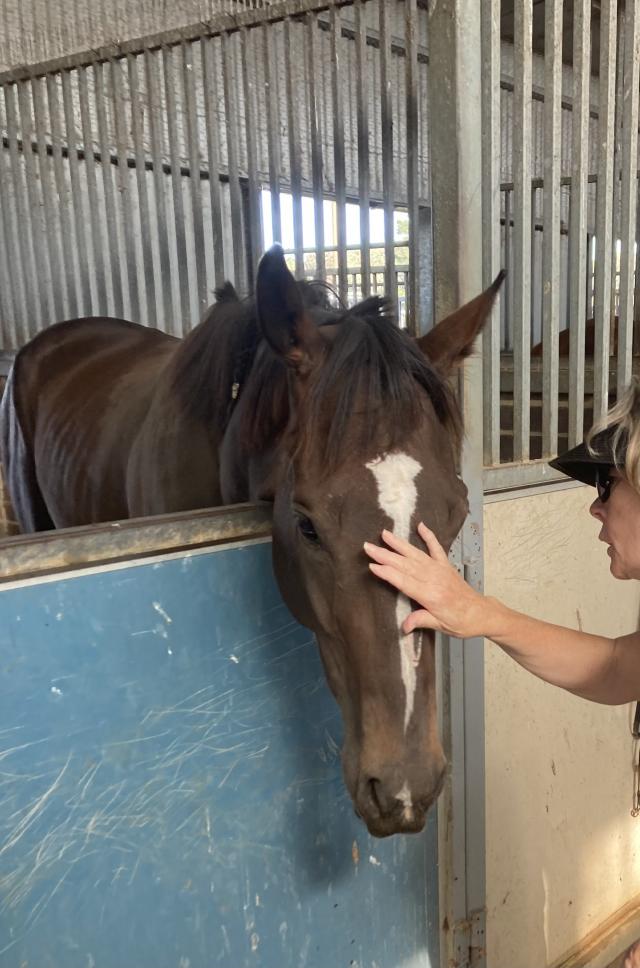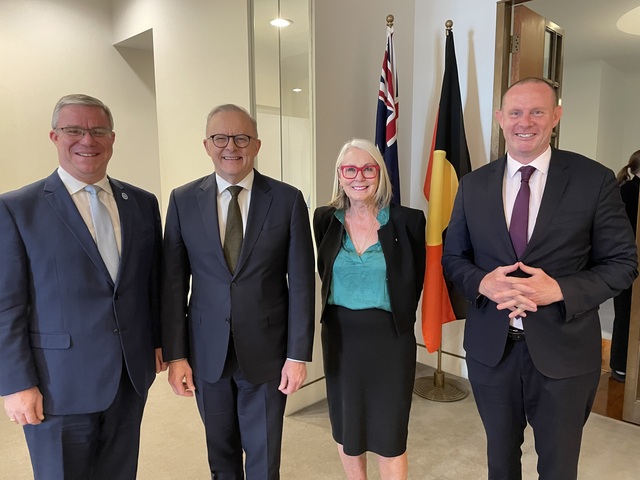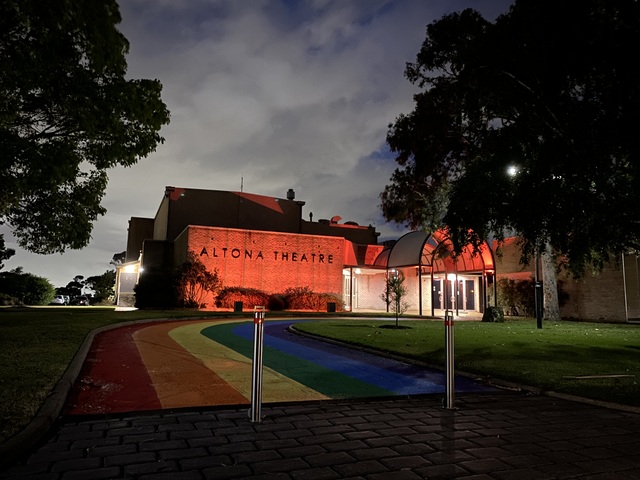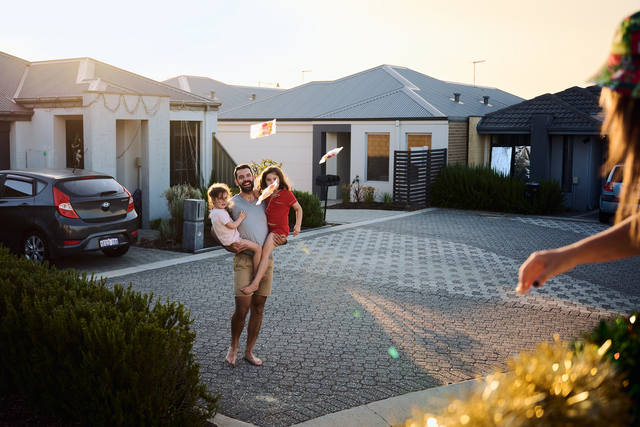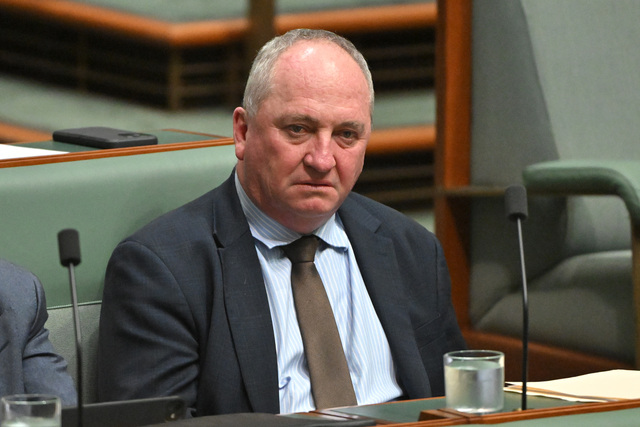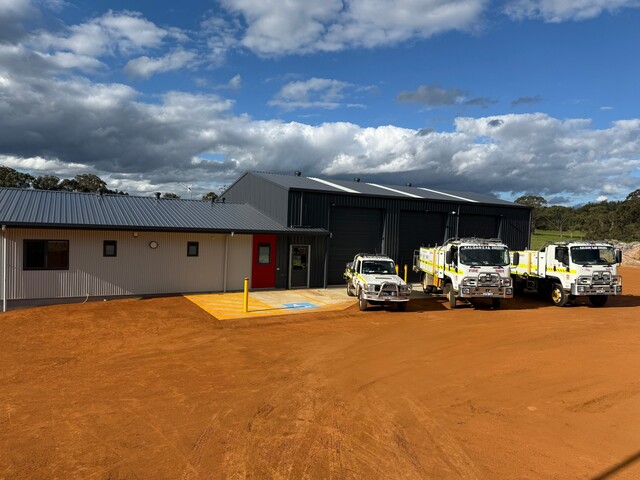A great story of collaboration is currently playing out on King Island.
It involves six Ballarat horse trainers who’ve been taking regular holidays there over the years, and now want to give King Island an economic leg-up.
The particular problem is that there’s only a dozen racehorses on the Island. So the Ballarat trainers recently banded together to buy six cheap horses at the Inglis horse sales. They’ve now been shipped (via Port Welshpool) in readiness for the inaugural Miners Rest Cup (in homage to their Ballarat suburb) to be run on 21 January.
Well this innovative play grabbed my attention when I learned that Never Astern is one of the six horses! He was owned by some ANU Aussie Rules Old Boys, including yours truly. Racing around Canberra, he was unplaced in eleven runs due to heavy tracks and a throat problem requiring a tie-back operation. That’s how he finished up in Ballarat and then King Island. We’re all tracking his progress because we reckon he’s not a complete duffer.
Industry/regional development angles
There are fascinating angles, with parallels to other regional communities.
The first angle is the racehorse industry. Henry Dwyer, one of the Ballarat trainers, explained that the plan is to not only help address the Island’s lack of horses, but to create a buzz. The racing season is limited to seven meetings during January-February, and they usually involve six races – four for thoroughbreds, and two for pacers. Some horses will come on the ferry from Burnie. Prizemoney is modest, and the Ballarat trainers will bring 60 or so sponsors and friends with them.
The second angle is the King Island economy-based on tourism, beef and dairy products. The population is only 1,500, and I’m advised that there’s only 150 tourism beds. This is an obvious constraint in the high season. The winter months presumably put a dampener on ideas about new dwelling construction. But Kangaroo Island to its west has similar weather patterns and geography and has impressive tourism accommodation.
The third angle is the tourism product itself. It really is an under-appreciated – but fantastic – offering. Think beef and cheese, where King Island has an international brand. Think locally-caught lobsters chased down with Tassie cool climate wines, plus two very good golf courses (top 20 in Australia), the bushwalking terrain, the sight-seeing options, and funky race meetings!
The fourth angle, namely access to the Island, is a constraint. There are no passenger ferries, and airfares to/from Victoria and especially Tasmania can be on the high side. On the other hand, Sharp Airlines, which specialises in Bass Strait flights with 19-seat Metroliners, has a return flight from Essendon, three nights’ accommodation plus car rental for $865 p.p. Very good in the scheme of things.
Final thoughts
Investment triggers and catalysts are important in regional development. Can the Miners Rest Cup perform the same? There are great examples elsewhere e.g. Birdsville Cup, Jericho Cup in Warrnambool. Someone obviously had the vision and persistence to get these events rolling, and the Ballarat and King Island folk are on the same path.
And city slickers don’t appreciate the social dimension of horse racing in the Bush. It’s where everyone meets, gossips and forgets the vagaries of rural life. A classic example is Queensland where every Saturday there are about 10 meetings across the State! The Greens’ push to ban horseracing will seriously back-fire on them even in urban seats.
The role of government in all this? Probably not much. Airline subsidies are problematical. A runway extension to enable bigger aircraft is perhaps premature.
The pressing need is for tourism accommodation. Surely there are builders/developers on King Island or in northern Tasmania who can see the potential if the factor conditions can be properly aligned.
And I’m thinking that King Island stakeholders could emulate the Ballarat boys by pushing smallish projects aligning with their competitive advantage. For example, it has year-round pastures, solitude and the Roaring Forties. Why not pitch to become a home for retired racehorses – and acting as therapy horses to assist marginalised or disadvantaged people? As Henry Dwyer explained, the essence is ‘humans helping horses helping humans’.
Rick Stein – a true catalyst
This British chef is a living legend. He has put Padstow and Cornwall generally on the food tourism map – pasties, clotted cream, Cornish Crab, cider etc. His TV shows on the BBC are a skilful blend of food recipes wrapped around the history and geography of communities across the UK and continental Europe and Asia.
Sadly, Rick has done insufficient work in regional Australia. He’s married to an Aussie and spends a lot of his time at his Bannisters Restaurant at Mollymook NSW.
I approached one his managers a few months back about doing a series with his son Jack, around various Aussie communities. The ABC or SBS would surely see the potential. He’d get King Island rocking, along with Robe, Port Fairy, Coffs Harbour, Cairns, Broome, Fremantle etc. Indeed inland places like Broken Hill with its saltbush lamb would be news to many.
Think about the international tourism potential. If your council is interested, please contact me and we’ll see where we take this.
Regional development – three questions
1. Why does every politician mouth off ‘rural and regional Australia’ without really comprehending the ‘regional’ bit? Bondi is regional, being part of Sydney’s eastern region. Surely if the subject is outside the major cities, the correct term is ’rural’?
2. Why do people invariably say they grew up in regional Victoria or wherever, but never mention their hometown? Should be a source of pride! Do they worry about their privacy, or that of their relations? Serious question.
3. Why hasn’t regional Australia shown it displeasure at the feds’ closure of its flagship program Building Better Regions Fund? Perhaps the punters have decided it’s all too hard?

